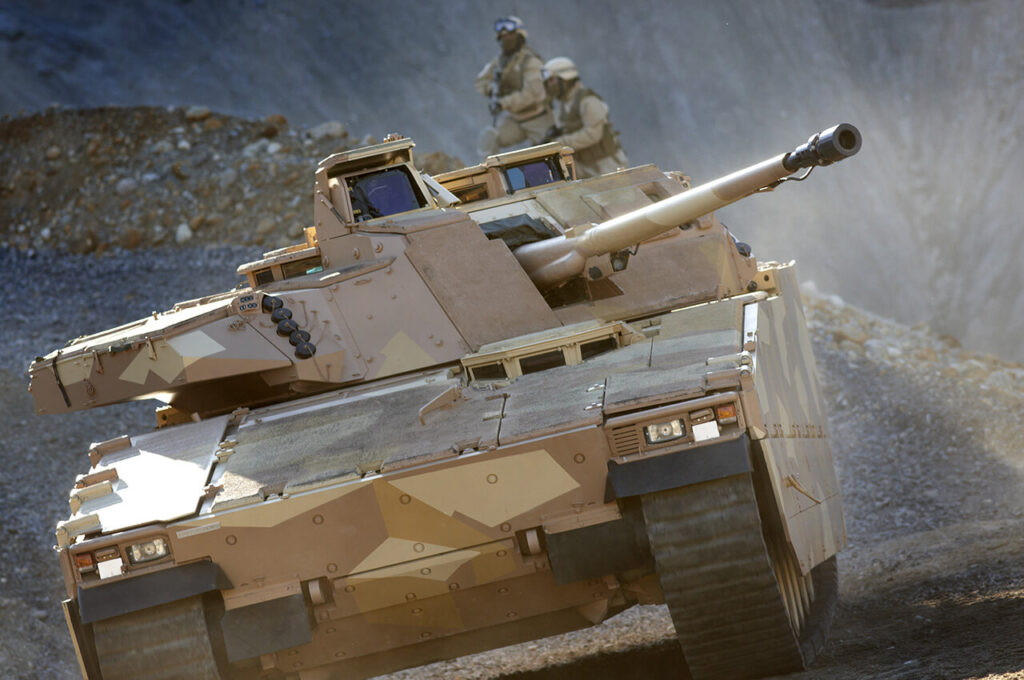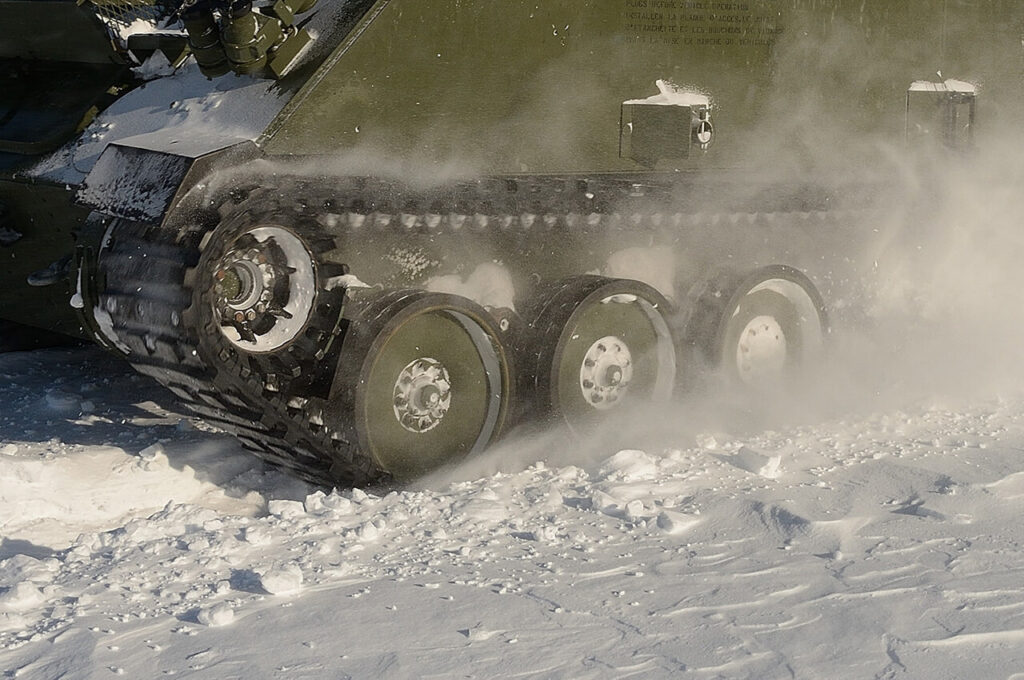Introduction
CRT has been fitted to Armoured Vehicles (AVs) since 1988 and is currently integrated on several different platforms such as M113, CV90 and BRONCO to name a few, reaching from North America to Asia. With Soucy having such a widespread portfolio of vehicle fleets it is with no surprise that CRT has performed in many different climatic environments from the soring desert heat of Afghanistan to the freezing temperatures of Scandinavia and Canada.
Hot Climatic Conditions
Since mechanised warfare began, one of the biggest contributors to unreliability of military equipment in the Land Domain has been the environment and terrain in which it is operated. CRT fitted to the CV90 AVs has been proven to sustain A1 & C21 Climatic cycling as described in both STANAG 4370 and Def- Stan 00-35. The CRT integrated CV90 of the Norwegian Army was first deployed in Afghanistan in late Dec 2010. The unique components and design of CRT allows for superior traction and manoeuvrability through deep sand, rock, wadis, dry lakes, and riverbeds, at temperatures in excess of 50 degrees Celsius, thus maintaining better momentum and operational tempo.

Cold Weather Environment (CWE)
More recently on a Norwegian lead NATO exercise, Ex Joint Viking 2017, the same CV90 fleet with integrated CRT was deployed in sub-arctic temperatures. CRT is lighter than Steel Track (ST), therefore it creates less ground pressure, which enabled the vehicle fleet to cross the rugged northern mountainous region of Finnmark, a manoeuvre that was previously unachievable on ST.

Conclusion
CRT is proven to perform in all climatic conditions. It also provides a reduction in track system weight of approximately 1500kg on a 35mT vehicle with ST. Vehicles typically up-armour for Operations – increasing their weight. As a result, Nominal Ground Pressure (NGP) rises, which leads to a reduction in terrain accessibility. CRT allows NGP to be reduced, thereby regaining access to some terrain lost due to vehicle weight increases. CRT is operationally fielded and provides the greatest benefits with the lowest risk.
1 Worldwide Temperature and Humidity Cycles. A1 = Temp 32 to 49C Relative Humidity – 03 – 08 %
C2 = Temp -37 to -46C Relative Humidity – Tending to saturation